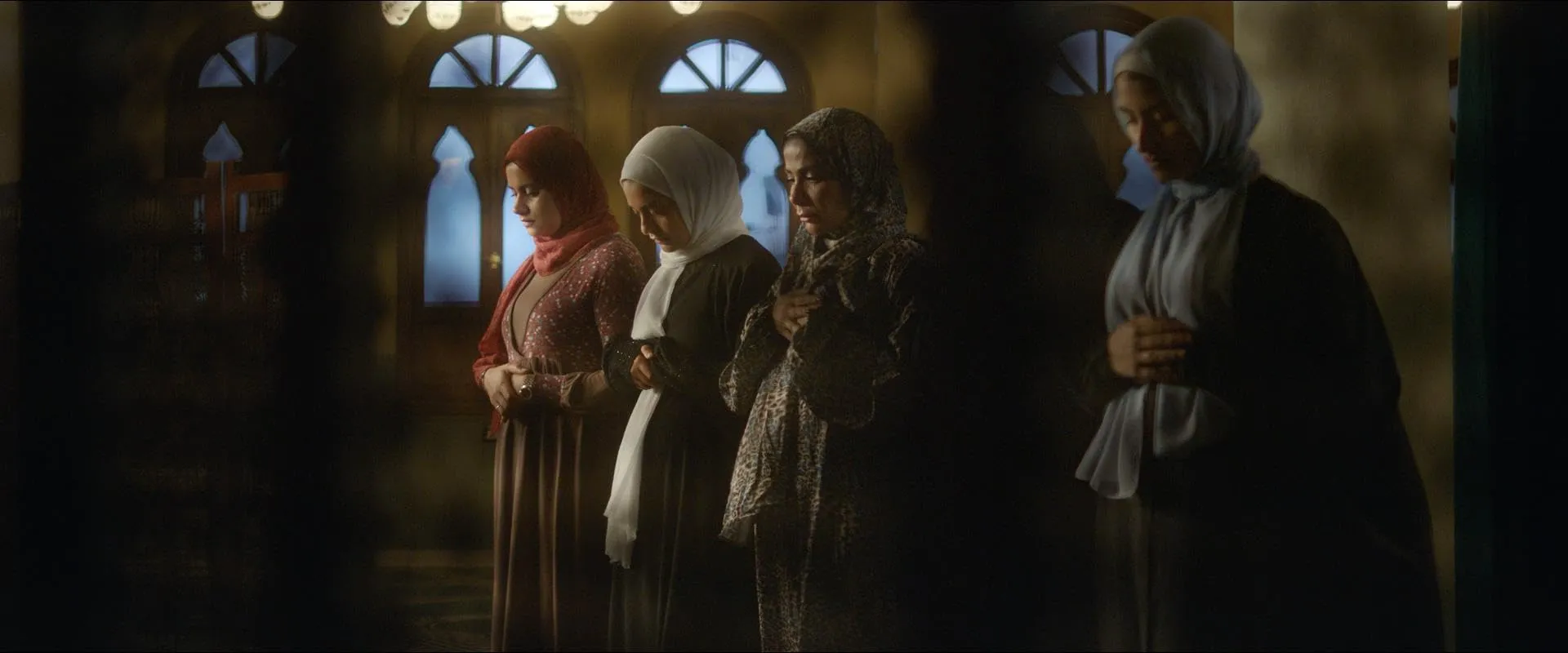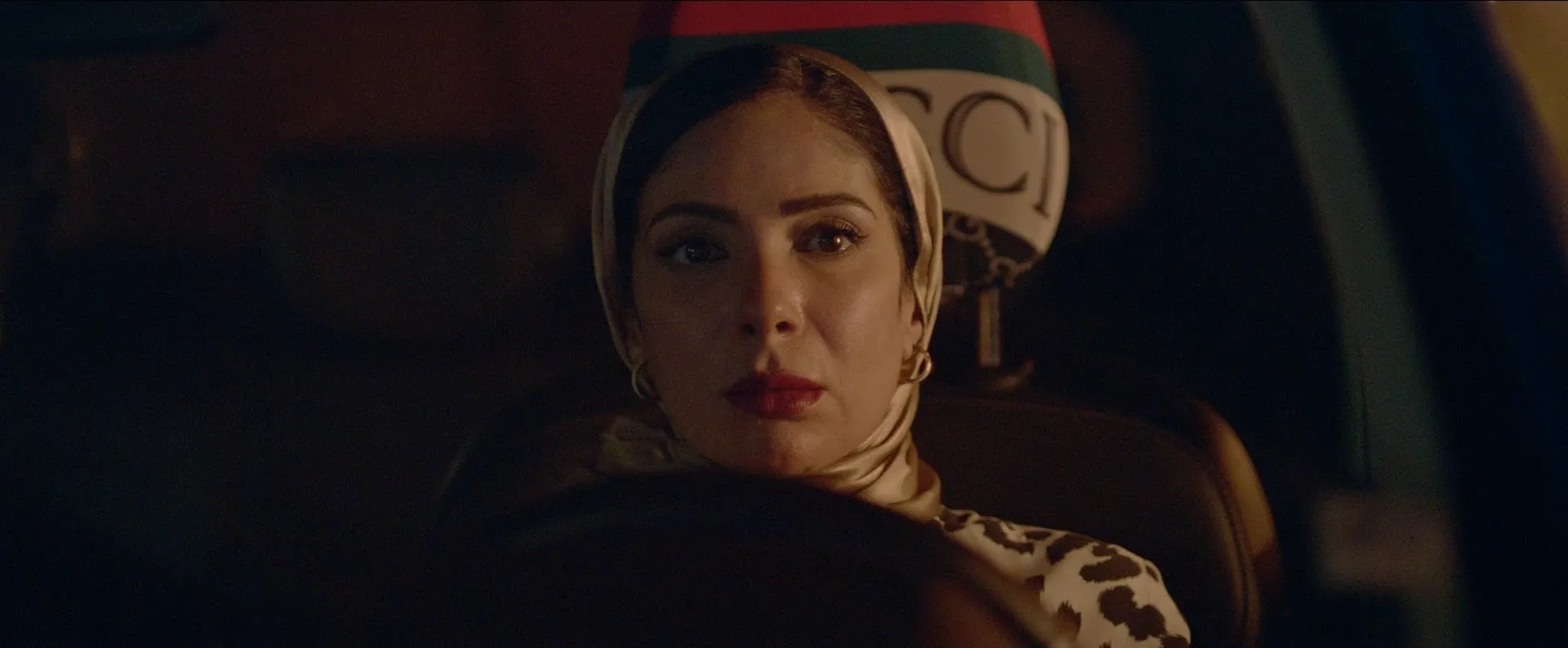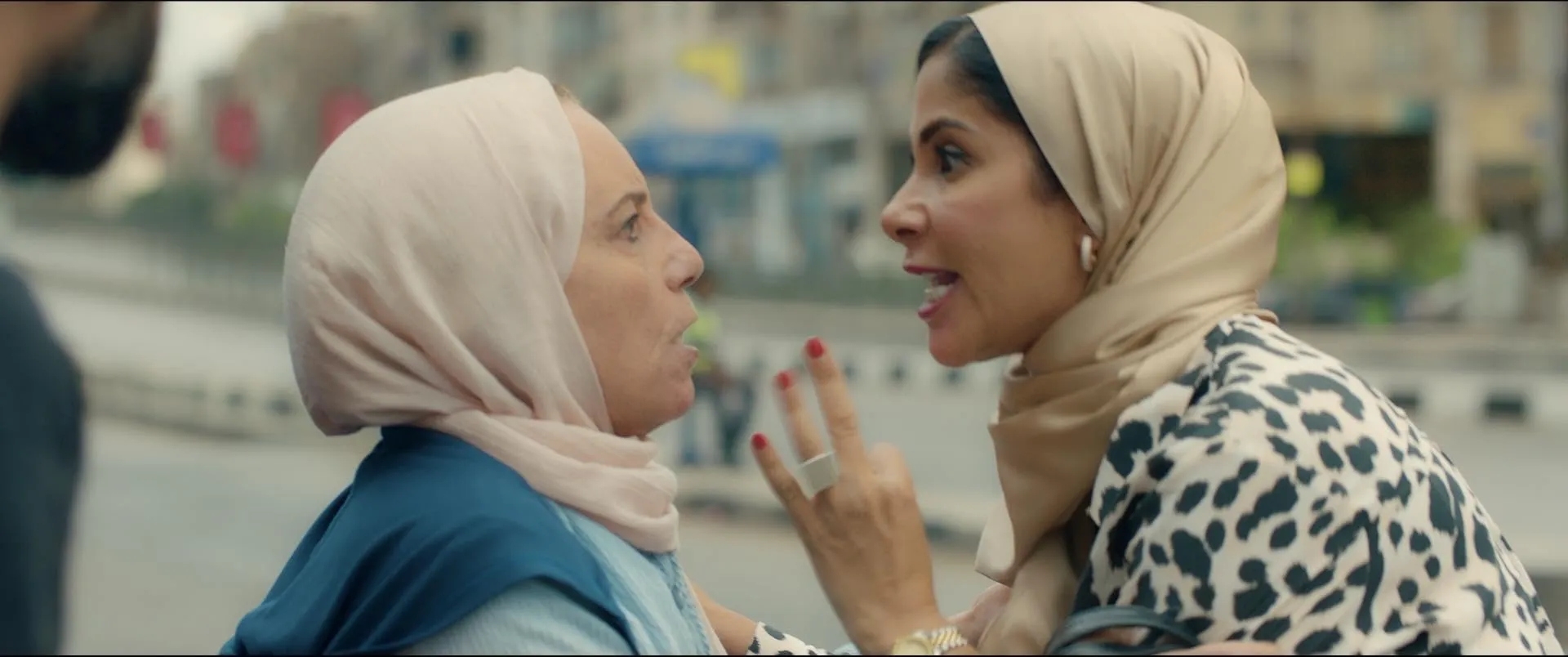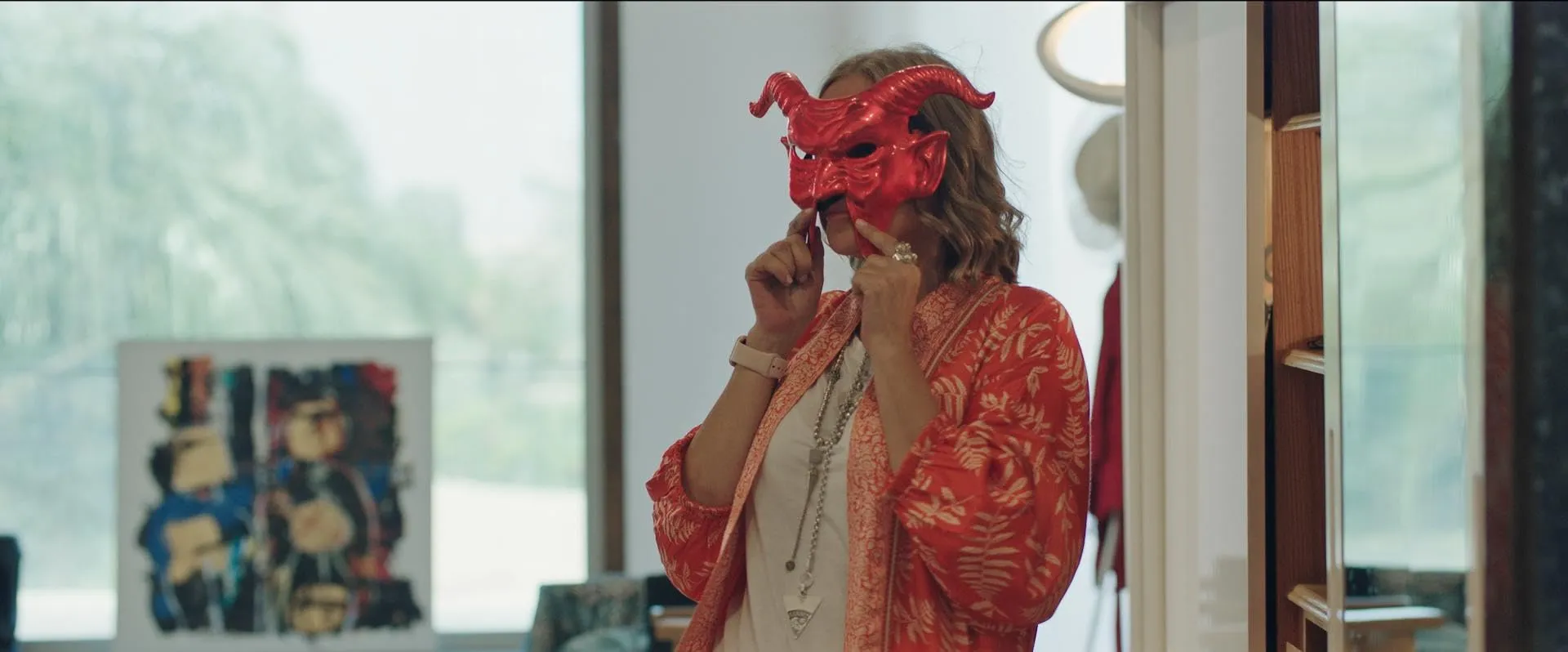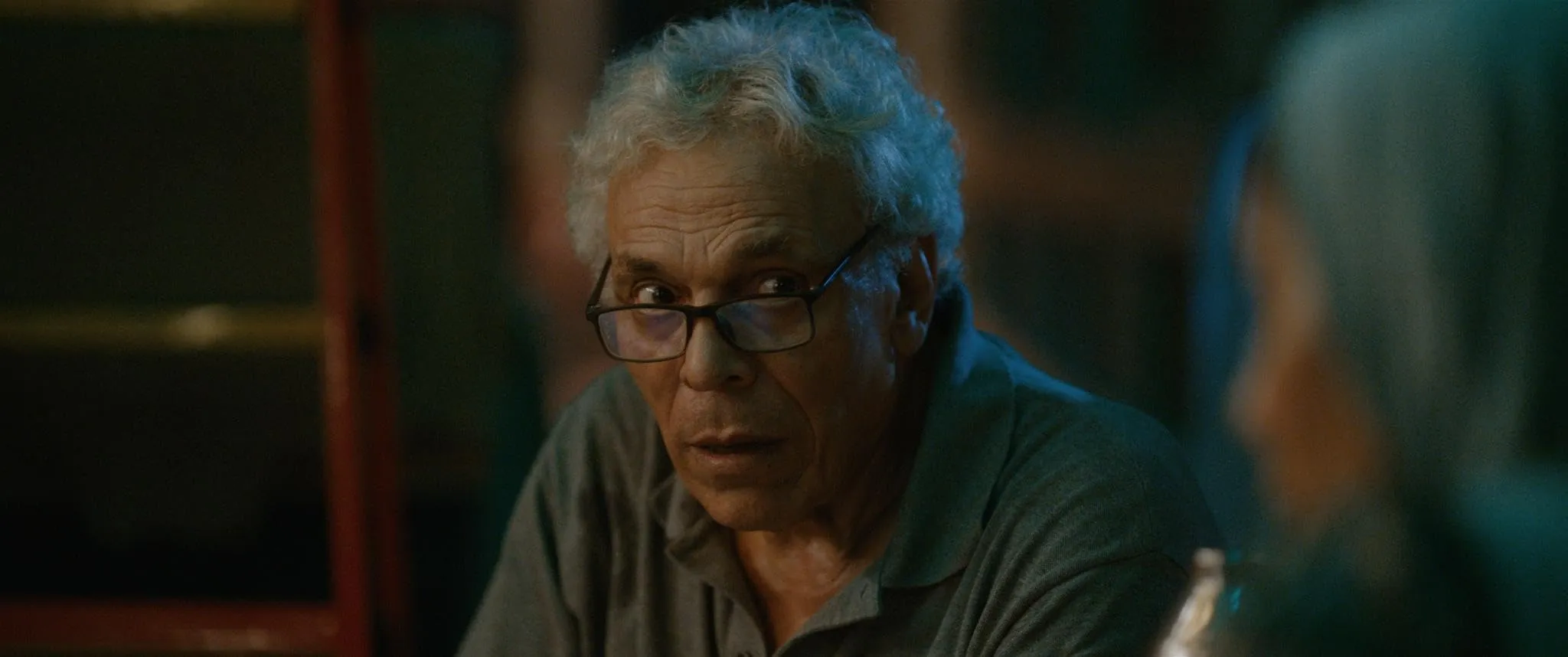At the heart of this film lies the account of Ghada, a woman whose past misdeeds and lost ideals converge at a pivotal moment on her way to Mecca.
The narrative unfolds in a setting where the hustle of modern Cairo intermingles with deeply rooted religious practices—a paradoxical stage that mirrors Ghada’s internal discord (a striking reflection of societal shifts seen in turbulent historical epochs).
The story situates her amidst the vibrant chaos of urban life, where skyscrapers and ancient mosques coexist in uneasy proximity, each representing conflicting forces of material desire and spiritual yearning.
Ghada wrestles with the scars of her former life, her quest for redemption disrupted by a personal crisis: her mother’s sudden misfortune (a scenario that might evoke memories of timeworn familial dramas).
This turning point forces her to confront the remnants of her past, a relic of a life she hoped to leave behind. The title, “Flight 404,” operates as a potent symbol of loss and misdirection—a search for something irretrievably absent.
It conjures the image of a missing identity, an error in the human condition, and hints at a transformative quest that is as fraught with missteps as it is with moments of stark clarity.
Fragments of Self and Shadows of the Past
Ghada, the film’s central figure, presents an intricate profile that is both compelling and contradictory. Here is a woman who has managed to build a respectable life in the corporate sphere while concealing a past steeped in the underbelly of society (a juxtaposition that might remind one of historical figures whose public lives sharply contrasted with their clandestine endeavors).
Her character is marked by a constant internal tug-of-war—an oscillation between a desire for moral purification and the haunting allure of former vices.
Her emotional landscape is a complex topography of regret, defiance, and a quietly simmering resolve to reclaim her sense of self (an internal battle that might be likened to the moral quandaries of bygone eras).
Turning to the secondary figures, Ghada’s mother emerges as a pivotal catalyst. Her presence acts as a tangible reminder of past transgressions and instigates the reckoning that Ghada must face.
In this narrative, familial ties transform into potent symbols of inherited duty and the weight of past missteps. Other figures—those from her previous life—serve not merely as background characters but as reflective surfaces that capture the multifaceted dimensions of her identity.
They provide a mirror to the life she once led, stirring old emotions and challenging her current resolve (an ironic twist reminiscent of the harsh mirrors of societal retribution seen in historical dramas).
The interplay among these characters is anything but straightforward. Interactions with individuals from her past—both male and female—exhibit a curious mix of tension and reluctant familiarity. Such exchanges underscore the conflicting impulses of self-redemption and the inescapable pull of her earlier lifestyle.
Each encounter is a microcosm of larger themes, capturing the essence of personal reinvention while exposing the stubborn residue of former allegiances. This intricate web of relationships invites viewers to reflect on the cost of transformation and the persistent echoes of history that shape individual destiny.
Signals Amidst the Static
Ghada’s pursuit of a sacred journey stands at odds with the relentless demands of everyday existence. The film portrays this tension with a keen sense of irony—a push and pull between the elevated ideals of spiritual calling and the pragmatic needs of a worldly life.
Her preparations for the pilgrimage coexist with the pressure to resolve immediate, material concerns, an oscillation that mirrors societal struggles observed during significant historical shifts (one might even say it nods to the friction of industrial versus spiritual eras).
The film sprinkles its narrative with emblematic cues: the hijab as an emblem of transformation, the ritual of washing one’s feet to mark moments of introspection, and other cultural signifiers that articulate an internal metamorphosis. These elements are not mere decorative details; they function as signposts on a map of personal rebirth.
Each gesture is carefully constructed to echo the protagonist’s inner conflict and the quiet rebellion against a past she strives to repudiate (a sort of silent protest against the mundane).
“Flight 404” is more than a title—it is a conceptual framework for understanding absence and disorientation. It suggests a state of being adrift, a search for a purpose that remains just out of reach.
This notion resonates with the modern experience of identity loss amid rapid change, striking a chord with audiences who feel similarly unanchored in contemporary society. Here, the error message becomes a symbol of the elusive nature of fulfillment and self-recognition.
Narrative Layers and Cinematic Syntax
The screenplay presents a richly textured narrative where Ghada’s present challenges merge with fragments of her former life. The plot unfolds through several strata—each revealing a facet of her internal conflict.
Memories of her past surface intermittently, prompting moments of suspense as the narrative shifts from reflective recollections to pressing dilemmas in the present (a technique reminiscent of certain historical epics that juxtapose personal turmoil with societal shifts).
This layering creates a mosaic of time, where each recollection is carefully interspersed with scenes depicting her current struggles.
The dialogue is crafted with an ease that belies its weighty themes. Characters converse in a manner that might seem offhand, yet every line is laden with significance.
These exchanges are not confined to straightforward exposition; they hint at hidden truths and unsaid regrets. Short, brisk exchanges often interrupt more extended, thoughtful monologues, creating a rhythm that mimics the unpredictability of real life.
At moments, the pace feels measured—allowing viewers to absorb the gravity of Ghada’s internal battles—while at others, events accelerate sharply during moments of crisis, intensifying the dramatic effect.
Symbolism threads throughout the script in subtle but effective ways. Recurring rituals—such as the act of cleansing before prayer—are placed against scenes of stark urban tension, setting up a contrast between sacred tradition and the demands of contemporary existence.
The screenplay gradually unfolds details of Ghada’s hidden history through carefully placed exposition that neither overwhelms nor undercuts the mystery surrounding her motivations.
This careful balance keeps the audience questioning, even as they are offered insights into her character.
Each narrative choice contributes to a layered, intricate storytelling approach that reflects the complexity of personal transformation within a modern setting.
Visions in Flux and Fashioned Frames
The film’s visuals present a striking interplay of light and texture. Overlit scenes and grainy images serve as a mirror to internal disarray and the hazy line separating what once was from what is now.
Framing choices capture emotions with a precision that seems to slice through pretense, suggesting an emotional fragmentation reminiscent of vintage snapshots lost in time (a nod to the chaotic elegance of historical photojournalism).
Settings shift seamlessly between modern corporate spaces and locales that echo traditional symbolism. Here, every environment is meticulously designed to reflect contrasting energies: the sterile clarity of urban life juxtaposed with the rich cultural imprints of old traditions.
Costumes, particularly the recurring presence of the hijab, become more than mere fabric; they mark a transformation, a silent punctuation in a narrative that speaks in visual cues.
Sound design is equally considered. Sparse background tunes underscore moments of tension, while ambient noises and the measured cadence of dialogue create a layered auditory experience.
The interplay of these elements invites viewers to consider the film as a commentary on social shifts, where every visual detail and sonic nuance contributes to a tapestry of personal and collective rediscovery.
Directorial Craft and Ensemble Alchemy
The director presents a careful balancing act throughout the film. His method marries a multi-layered narrative with a subtle infusion of thematic hints.
Scenes shift between reflective flashbacks and present-day crises, and the pacing often surprises—rapid in moments of calamity, measured when characters pause to reflect on their own frailties.
There is a dry wit at play when the film exposes the absurdity of life’s unexpected detours (a nod to historic cinematic experiments that mixed humor with tragedy).
The handling of tone oscillates smoothly; at times, the story teeters on the verge of absurdity, provoking a wry smile, while in other moments, its gravity demands solemn attention.
Mona Zaki’s portrayal of Ghada serves as the film’s emotional compass. Her performance is a study in contrasts: an impeccable blend of steely resolve and tender vulnerability.
Specific scenes—such as quiet exchanges that hint at unsaid regrets or sudden bursts of raw emotion—underscore the complexity of a woman striving to outpace her shadowy past while reconciling with a pressing need for moral rebirth.
Her every gesture carries an understated intensity that captures both personal torment and moments of levity (a rare feat in films of this ilk).
The supporting cast, too, plays an indispensable role. Each interaction with Ghada is a mini-drama, contributing layers of meaning to the overarching narrative.
Characters from various facets of her past punctuate her present with conflicting signals, generating a dynamic chemistry that enriches the film’s exploration of redemption and self-reclamation.
Final Echoes and Lingering Reverberations
Ghada’s tale unfolds through a maze of personal trials and symbolic revelations. The film charts a path that is at once intimate and emblematic of wider societal shifts.
Its narrative arcs trace a woman’s gradual transformation, a progression from buried past indiscretions to a tempered quest for spiritual repair (one might compare this metamorphosis to the complex shifts seen in eras of social reform).
The interplay of memory and modernity in her character speaks to the restless pulse of communities in transition—a reminder of historical episodes when personal reinvention was both a risk and a necessity.
The work’s cultural imprint is marked by its refusal to conform to neat categorizations. A rich array of symbols—the weight of tradition rendered in every carefully chosen costume and ritual—invites viewers to ponder the forces that shape identity.
Here, every carefully crafted scene stands as a microcosm of an age where old values collide with emerging realities. There is an artful tension in the way the screenplay reveals its layered secrets, its moments of levity interspersed with stark reckonings that spark quiet introspection.
Mona Zaki’s performance and the director’s subtle hand join to produce an experience that resonates on both personal and societal registers, leaving behind echoes that linger in the viewer’s mind.
The Review
Flight 404
"Flight 404" emerges as an intellectually challenging, symbol-rich film that grapples with personal transformation amid cultural dichotomies. While its narrative occasionally teeters on excess, Mona Zaki’s performance and the director’s layered vision provide enough intrigue to reward patient viewers. This film reflects on modern struggles in a manner that is both thought-provoking and, at times, wryly amusing. It may not offer easy resolutions, yet its bold thematic ambitions make it a notable cinematic experiment.
PROS
- Rich symbolic narrative
- Thought-provoking themes
CONS
- Occasionally convoluted plot layers
- Uneven pacing in parts









































